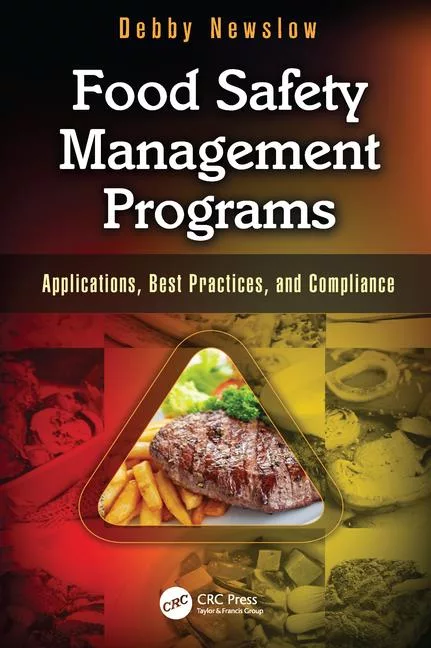FDA Releases 2015 NARMS Integrated Report

Source: FDA
This week, the U.S. Food and Drug Administration (FDA), along with its National Antimicrobial Resistance Monitoring System (NARMS) partners, the Centers for Disease Control and Prevention (CDC) and the U.S. Department of Agriculture’s (USDA's) Food Safety and Inspection Service, released the 2015 NARMS Integrated Report. The annual report highlights antimicrobial resistance patterns in bacteria isolated from humans (by CDC), raw retail meats (by FDA), and animals at slaughter (by USDA). The report also provides information derived from whole genome sequence data about resistance genes for all Salmonella and some Campylobacterisolates. The report includes NARMS Now, a set of interactive data tools that allow users to explore the dynamics of antibiotic resistance and the genes involved. While overall resistance remains low for most human infections and there have been measurable improvements in resistance levels in some important areas, NARMS is closely monitoring a few areas of concern.
NARMS monitors antibiotic resistance in foodborne bacteria in order to assist public health officials in making data-driven decisions designed to preserve the effectiveness of antibiotics for humans and animals. For example, NARMS data inform FDA’s approval of safe and effective new antimicrobial drugs for animals, and help CDC and USDA investigate foodborne illness outbreaks. NARMS data will also be critical in evaluating the effectiveness of FDA’s Guidance for Industry #213 and the agricultural objectives in the U.S. National Action Plan for Combating Antibiotic-Resistant Bacteria.
Consumers can help protect themselves from foodborne bacteria, including antibiotic-resistant bacteria, by following four basic food safety tips: clean, separate, cook, chill. Learn more at http://www.foodsafety.gov/keep/basics/.
Findings
The points listed below summarize a selection of observations from the 2015 NARMS Integrated Report:
- Seventy-six percent of Salmonella isolated from humans had no resistance to any of the 14 antimicrobial drugs tested.
- Multidrug resistance (MDR) increased from 9 percent to 12 percent of human Salmonella, driven largely by an increase in combined resistance to ampicillin, streptomycin, sulfonamides, and tetracycline among Salmonella serotype I 4,[5],12:i:-.
- Ceftriaxone resistance either continued to decline or remained low in nontyphoidal Salmonella from all NARMS sources except turkey hazard analysis and critical control point (HACCP) samples, where the percent resistance in 2015 (15.7 percent) was the same as 2010 levels.
- While still rare, azithromycin resistance occurred in Salmonella, in some cases in strains with resistance to other antibiotics.
- Erythromycin resistance in Campylobacter coli increased three-to five-fold between 2011 and 2015 in isolates from humans (2.7 percent to 12.7 percent) and from chicken carcasses (3.4 percent to 12.8 percent).
- Transmissible quinolone resistance in Salmonella may be increasing. The underlying resistance traits reside on mobile genetic elements and therefore have the potential to be shared, either alone or together with other resistance genes, with susceptible strains of Salmonella.
- From 2014 to 2015, there was a decline from 73 percent to 57 percent in the proportion of retail ground turkey Salmonellaisolates resistant to at least one antimicrobial. Historically, the majority of isolates from turkey sources have been resistant to at least one antimicrobial.
Note:
This NARMS Integrated Report covers a time period prior to full implementation of FDA's Guidance for Industry #213, which sought to end the use of medically important antibiotics in food-producing animals for growth promotion purposes and place the remaining therapeutic uses of these products under veterinary oversight by asking sponsors of affected products to voluntarily modify their product labeling. All sponsors made the recommended changes by the January 1, 2017 target date, or, in some cases, voluntarily withdrew approved product applications.
What’s Next
NARMS will continue to take advantage of whole-genome DNA sequencing technology. This technology makes it possible to determine the complete complement of genes in a bacterium within a single laboratory workflow, supplanting other traditional methods and saving time and money. NARMS research shows that antibiotic resistance can be predicted reliably from the genomic sequence. Therefore, FDA is developing data visualization tools to make these large data sets easier to understand. Other tools are being developed by CDC for state laboratories for quickly identifying resistance patterns in outbreak strains. These enhancements will help set priorities and help public health authorities respond to food safety challenges in a more timely manner.
Looking for quick answers on food safety topics?
Try Ask FSM, our new smart AI search tool.
Ask FSM →








